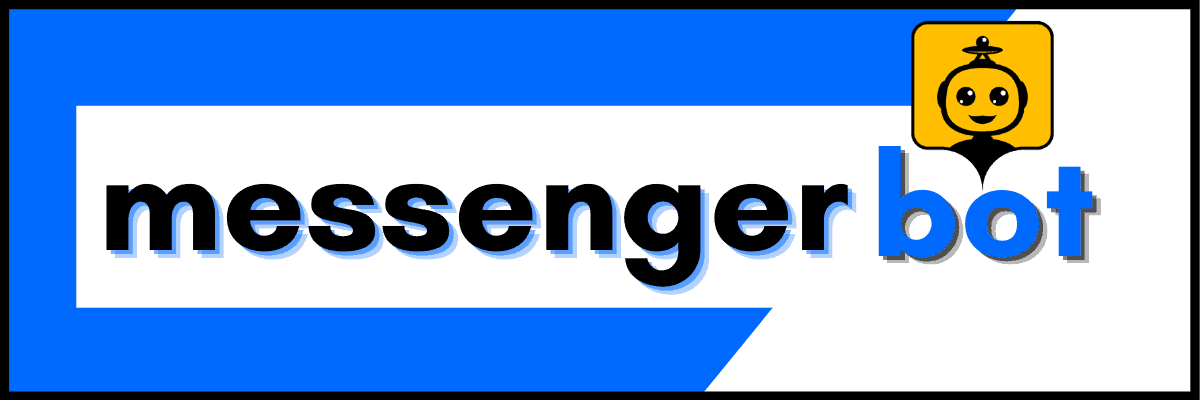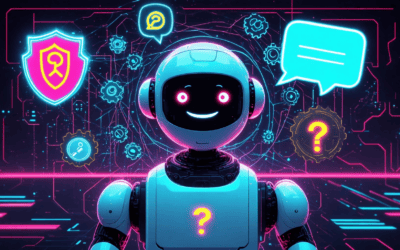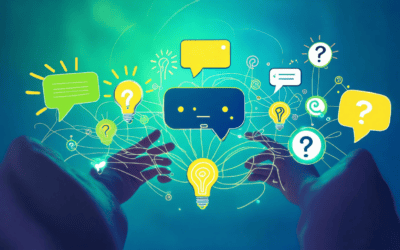Welcome to our comprehensive exploration of the chatbot industry, where we delve into the latest insights, emerging trends, and profitability potential of this rapidly evolving sector. As businesses increasingly turn to automation to enhance customer engagement and streamline operations, understanding the chatbot industry overview becomes essential. In this article, we will address pivotal questions such as how big is the chatbot industry? and what industries use chatbots?, while also examining the chatbot market size according to Gartner. We will highlight the demand for chatbots, explore various types and functionalities, and analyze popular platforms that dominate the market. Additionally, we will investigate the profitability of chatbots through revenue models and real-world case studies. Join us as we uncover the dynamic landscape of the chatbot industry and equip you with the knowledge to navigate its future.
Chatbot Industry Overview
The global chatbot industry has experienced significant growth, with the market size estimated at approximately USD 5.13 billion in 2022. Projections indicate that this market is poised for substantial expansion, with an anticipated compound annual growth rate (CAGR) of 23.3% from 2023 to 2030. This growth can be attributed to increasing demand for automated customer service solutions, advancements in artificial intelligence (AI) technologies, and the rising adoption of chatbots across various sectors, including e-commerce, healthcare, and finance.
Chatbot Market Size Gartner
Key factors driving the chatbot market include:
- Enhanced Customer Engagement: Businesses are leveraging chatbots to provide 24/7 customer support, improving response times and customer satisfaction.
- Cost Efficiency: Implementing chatbots can significantly reduce operational costs by automating routine inquiries and tasks.
- Integration with Messaging Platforms: The rise of messaging apps has facilitated the integration of chatbots, making them more accessible to users.
- AI and Machine Learning Advancements: Continuous improvements in natural language processing (NLP) and machine learning are enhancing chatbot capabilities, allowing for more sophisticated interactions.
According to a report by Grand View Research, the chatbot market is expected to reach USD 9.4 billion by 2024, further underscoring the rapid growth and potential of this industry. Additionally, a study by Business Insider projects that by 2024, chatbots will handle 80% of customer service interactions, highlighting their increasing importance in business operations.
In conclusion, the chatbot industry is on a robust growth trajectory, driven by technological advancements and a shift towards automated customer interactions, making it a crucial area for investment and development in the coming years.

How Big is the Chatbot Industry?
The chatbot industry has experienced significant growth in recent years, driven by advancements in artificial intelligence and increasing demand for automated customer engagement solutions. As businesses across various sectors recognize the value of chatbots in enhancing customer interactions, the market continues to expand rapidly. In this section, we will explore the chatbot industry overview and delve into the chatbot market size as reported by Gartner.
Chatbot Industry Overview
Chatbots are versatile tools utilized across various industries to enhance customer engagement, streamline operations, and improve service delivery. Here are some key industries that leverage chatbots:
- E-commerce Industry: Chatbots assist in customer service by answering queries, providing product recommendations, and facilitating transactions. They can also handle order tracking and returns, significantly improving the shopping experience (source: Shopify).
- Healthcare Industry: In medicine, chatbots are used for appointment scheduling, patient triage, and providing health information. They help reduce the workload on healthcare professionals while ensuring patients receive timely assistance (source: Journal of Medical Internet Research).
- Human Resources: Chatbots streamline recruitment processes by screening candidates, scheduling interviews, and answering employee queries about policies and benefits. This automation enhances efficiency in HR operations (source: Forbes).
- Travel Industry: Travel chatbots assist users in booking flights, hotels, and providing travel recommendations. They can also offer real-time updates on flight statuses and travel advisories (source: Skyscanner).
- Real Estate: In real estate, chatbots facilitate property searches, schedule viewings, and answer potential buyers’ questions, making the home-buying process more accessible (source: Zillow).
- Banking Industry: Banks utilize chatbots for customer support, helping users with account inquiries, transaction history, and even fraud detection. This enhances security and customer satisfaction (source: Accenture).
- Hospitality Industry: Hotels implement chatbots to manage bookings, provide concierge services, and gather customer feedback, improving guest experiences (source: Hospitality Technology).
- Foodtech Industry: In the food sector, chatbots are used for taking orders, providing menu recommendations, and managing delivery logistics, thus optimizing the customer dining experience (source: TechCrunch).
By integrating chatbots, these industries not only improve operational efficiency but also enhance customer satisfaction through personalized and immediate responses.
Chatbot Market Size Gartner
According to Gartner, the chatbot market is projected to reach a substantial size by 2024, reflecting the growing adoption of AI-driven solutions across various sectors. This growth is fueled by the increasing need for businesses to enhance customer engagement and streamline operations. As organizations continue to invest in chatbot technology, the market is expected to expand significantly, offering new opportunities for innovation and improved customer experiences.
For more insights on how chatbots are transforming customer service, you can explore our article on how AI chatbots are revolutionizing customer service.
How Big is the Chatbot Industry?
The chatbot industry is experiencing significant growth, driven by advancements in artificial intelligence and a rising demand for efficient customer service solutions. As we delve into the chatbot industry overview, it’s essential to understand the current market size and the trends shaping its future.
Chatbot Market Size and Projections
The global chatbot market was valued at approximately $4.7 billion in 2022 and is projected to grow at a compound annual growth rate (CAGR) of 23.3% from 2023 to 2028, potentially reaching $15.5 billion by 2028 (Master of Code Global, 2024). This remarkable growth reflects the increasing adoption of chatbots across various sectors, including e-commerce, healthcare, and finance. A report by Business Insider indicates that 80% of businesses plan to implement chatbots by 2024, highlighting the industry’s expanding footprint.
Moreover, consumer preferences are shifting towards automated interactions. A survey conducted by HubSpot revealed that 71% of consumers are willing to use chatbots for quick communication with brands, showcasing a significant change in how customers engage with businesses. The integration of natural language processing (NLP) and machine learning technologies has further enhanced chatbot capabilities, allowing for more personalized and context-aware interactions. According to Gartner, by 2025, 75% of customer service interactions will be powered by AI-driven chatbots, underscoring the technology’s growing importance in customer engagement strategies.
Industries Utilizing Chatbots
Various industries are leveraging chatbots to enhance customer engagement and streamline operations. E-commerce businesses, for instance, utilize chatbots for lead generation and customer support, significantly improving user experiences. Additionally, healthcare providers are adopting chatbots to manage patient inquiries and appointment scheduling, while financial institutions use them for customer service and fraud detection.
As the chatbot industry continues to evolve, staying informed about the latest trends and technologies is crucial. For more insights on how chatbots are transforming customer service, check out our article on how AI chatbots are revolutionizing customer service.
What are the four types of chatbots?
Understanding the different types of chatbots is essential for businesses looking to leverage the chatbot industry effectively. Each type serves unique purposes and can enhance user engagement in various ways. Here’s a closer look at the four main types of chatbots:
1. Menu or Button-Based Chatbots
Menu or button-based chatbots provide users with a predefined set of options to choose from, guiding them through a specific flow. These chatbots are particularly useful in customer service scenarios where quick responses are needed. According to a study by Chatbots Magazine, these chatbots can significantly enhance user experience by simplifying navigation.
2. Rules-Based Chatbots
Rules-based chatbots operate based on a set of programmed rules and keywords. They can handle straightforward queries but may struggle with complex questions. Research indicates that while rules-based chatbots are limited in their capabilities, they can be effective for specific tasks like FAQs, as noted by Forrester Research.
3. AI-Powered Chatbots
AI-powered chatbots utilize natural language processing (NLP) and machine learning to understand and respond to user queries more dynamically. They learn from interactions, improving their responses over time. A report by Gartner highlights that AI chatbots can reduce operational costs by up to 30%, making them a valuable asset in the chatbot industry.
4. Voice Chatbots
Voice chatbots interact with users through voice commands, often integrated with virtual assistants like Amazon Alexa or Google Assistant. They are increasingly popular in smart home devices and customer service applications. According to a study by Juniper Research, voice chatbots are expected to handle 8 billion voice-based queries by 2023, showcasing their growing relevance.
Chatbot functionality and features
In the rapidly evolving chatbot industry, understanding the functionality and features of different chatbot types is crucial for businesses aiming to enhance customer interactions. Here are some key functionalities:
- Automated Responses: Chatbots can provide real-time, automated responses to user inquiries across various platforms, including social media and websites.
- Workflow Automation: They enable businesses to create dynamic automated workflows triggered by specific user behaviors, improving engagement.
- Lead Generation: Chatbots help generate leads through interactive messaging strategies, making them cost-effective marketing tools.
- Multilingual Support: Many chatbots can communicate in multiple languages, allowing businesses to reach a diverse audience.
- Analytics: Chatbots provide insights into performance metrics and user interactions, helping businesses optimize their strategies.
For more insights on how chatbots can elevate customer support, check out our article on elevating customer support with conversational AI chatbots.

What is the Most Used Chatbot?
In the rapidly evolving chatbot industry, understanding which platforms dominate the market is crucial for businesses looking to enhance their customer engagement strategies. Currently, OpenAI’s ChatGPT stands out as the most widely used chatbot, celebrated for its advanced natural language processing capabilities and versatility across various applications. This platform not only excels in providing intelligent responses but also adapts to a wide range of user inquiries, making it a preferred choice for many organizations.
Popular Chatbot Platforms
Beyond ChatGPT, several other chatbots are gaining traction in the market, each offering unique functionalities tailored to different user needs. Here are nine notable platforms:
- Google Bard: Leveraging Google’s extensive data resources, Bard provides real-time information and conversational capabilities, positioning itself as a strong competitor in the chatbot space.
- Microsoft’s Bing Chat: Integrated with the Bing search engine, this chatbot utilizes AI to enhance search experiences and provide informative responses.
- Jasper AI: Focused on content creation, Jasper AI assists users in generating marketing copy, blog posts, and social media content through conversational prompts.
- Replika: Designed for personal companionship, Replika engages users in meaningful conversations, learning from interactions to offer a personalized experience.
- Cleverbot: An early entrant in the chatbot arena, Cleverbot engages users in casual conversation, continuously improving its responses based on user inputs.
- Kuki (formerly Mitsuku): A multi-award-winning chatbot known for its engaging personality and ability to converse on a wide range of topics.
- Chatbot.com: This platform allows businesses to create custom chatbots for customer service, lead generation, and user engagement, enhancing website user experience.
- Drift: Focused on sales and marketing, Drift’s chatbot helps businesses engage with potential customers in real-time, facilitating lead capture and customer support.
- Tidio: Combining live chat and chatbot functionalities, Tidio enhances customer service for e-commerce businesses by providing instant responses to inquiries.
These platforms reflect the growing trend of AI-driven conversational agents, each catering to different user needs and preferences. For further insights on the evolution and impact of chatbots, refer to authoritative sources like Gartner and McKinsey & Company.
User Preferences in Chatbot Technology
As the chatbot industry continues to grow, user preferences are shaping the development of these technologies. Factors such as ease of use, response accuracy, and the ability to handle complex queries are critical in determining which chatbots gain popularity. Businesses must consider these preferences when selecting a chatbot platform to ensure they meet customer expectations effectively.
For more information on enhancing customer support through chatbots, check out our article on Elevating Customer Support with Conversational AI Chatbots.
Is Chatbot Profitable?
The profitability of chatbots is becoming increasingly evident as businesses recognize their potential to enhance customer engagement and streamline operations. The global chatbot market is projected to reach $1.34 billion by 2024, growing at a CAGR of 24.3% (source: Business Insider). This growth is driven by the rising demand for efficient customer service solutions.
Why Chatbots are Profitable:
- Growing Demand: The increasing need for businesses to improve customer interactions is a key factor driving the chatbot industry’s growth. As companies seek to enhance customer engagement, the demand for sophisticated chatbot solutions continues to rise.
- Low Startup Costs: Developing a chatbot can be cost-effective, with platforms like Chatfuel and ManyChat offering free or low-cost options for businesses to create their own bots without extensive programming knowledge.
- Scalable Operations: Chatbots can handle thousands of inquiries simultaneously, allowing businesses to scale their customer service without a proportional increase in staffing costs. This efficiency leads to reduced operational expenses and increased profit margins (source: Gartner).
- Increased Sales and Conversion Rates: Chatbots assist in guiding customers through the sales funnel, providing personalized recommendations, and facilitating transactions. Studies show that businesses using chatbots can increase conversion rates by up to 30% (source: HubSpot).
- 24/7 Availability: Unlike human agents, chatbots can operate around the clock, providing immediate responses to customer inquiries. This constant availability enhances customer satisfaction and loyalty, which can translate into repeat business (source: Forbes).
- Data Collection and Insights: Chatbots gather valuable data on customer preferences and behaviors, enabling businesses to tailor their marketing strategies and improve product offerings. This data-driven approach can lead to higher profitability (source: McKinsey).
- Cost Savings on Customer Support: By automating routine inquiries, chatbots significantly reduce the need for extensive customer support teams, allowing companies to allocate resources more effectively and improve their bottom line (source: Deloitte).
In conclusion, chatbots represent a profitable investment for businesses looking to enhance efficiency, improve customer engagement, and drive sales. With the right strategy and implementation, companies can leverage chatbots to achieve substantial financial returns.
Revenue Models in the Chatbot Industry
The chatbot industry offers various revenue models that businesses can adopt to maximize profitability. Understanding these models is crucial for companies looking to invest in chatbot technology.
Common Revenue Models:
- Subscription-Based Model: Many chatbot platforms operate on a subscription basis, where businesses pay a monthly or annual fee for access to the chatbot service. This model provides a steady revenue stream for providers and allows businesses to budget their expenses effectively.
- Pay-Per-Use Model: Some platforms charge businesses based on the number of interactions or messages processed by the chatbot. This model is beneficial for companies with fluctuating engagement levels, as they only pay for what they use.
- Freemium Model: Many chatbot providers offer a basic version of their service for free, with premium features available for a fee. This model allows businesses to test the chatbot’s capabilities before committing to a paid plan.
- Lead Generation and Sales Commissions: Chatbots can also generate revenue by facilitating sales or capturing leads for businesses. Providers may charge a commission on sales made through the chatbot or for leads generated through its interactions.
By understanding these revenue models, businesses can choose the best approach to integrate chatbots into their operations and maximize their profitability.
How big is the chatbot industry?
The chatbot industry has experienced significant growth in recent years, driven by advancements in artificial intelligence and increasing demand for automated customer interactions. As of 2024, the global chatbot market is projected to reach approximately $1.34 billion, reflecting a compound annual growth rate (CAGR) of around 24% from 2020 to 2024. This growth is fueled by the rising adoption of chatbots across various sectors, including e-commerce, healthcare, and customer service, as businesses seek to enhance user engagement and streamline operations.
Chatbot industry overview
The chatbot industry encompasses a wide range of technologies and applications designed to facilitate automated communication between businesses and their customers. Chatbots can be categorized into two main types: rule-based and AI-driven. Rule-based chatbots follow predefined scripts and are limited in their responses, while AI-driven chatbots leverage machine learning and natural language processing to understand and respond to user inquiries more effectively. This versatility allows businesses to implement chatbots in various contexts, from customer support to lead generation.
Chatbot market size Gartner
According to Gartner, the chatbot market is expected to continue its upward trajectory, with a forecasted market size of $1.34 billion by 2024. This growth is indicative of the increasing reliance on chatbots for enhancing customer experiences and operational efficiency. Companies like Brain Pod AI are at the forefront of this trend, offering innovative solutions that integrate AI capabilities into chatbot functionalities, thereby improving user interactions and satisfaction.
What industries use chatbots?
Chatbots are utilized across a diverse array of industries, including retail, healthcare, finance, and travel. In retail, chatbots assist customers with product inquiries and order tracking, enhancing the shopping experience. In healthcare, they provide appointment scheduling and patient support, streamlining administrative tasks. The finance sector employs chatbots for customer service and fraud detection, while the travel industry uses them for booking assistance and itinerary management. This widespread adoption highlights the versatility and effectiveness of chatbots in meeting industry-specific needs.
Chatbot industry trends
Current trends in the chatbot industry include the increasing integration of AI and machine learning technologies, which enable chatbots to provide more personalized and context-aware interactions. Additionally, the rise of voice-activated chatbots is transforming user engagement, allowing for hands-free communication. Businesses are also focusing on enhancing multilingual support to cater to global audiences, further expanding the reach and effectiveness of chatbot solutions.
AI chatbot market size
The AI chatbot market is projected to grow significantly, with estimates suggesting a market size of over $1.34 billion by 2024. This growth is driven by the increasing demand for AI-powered solutions that can handle complex customer interactions and provide real-time support. Companies like Messenger Bot are leading the charge in this space, offering advanced features such as automated responses, workflow automation, and multilingual support, which are essential for businesses looking to enhance their customer engagement strategies.




